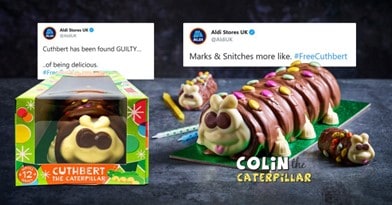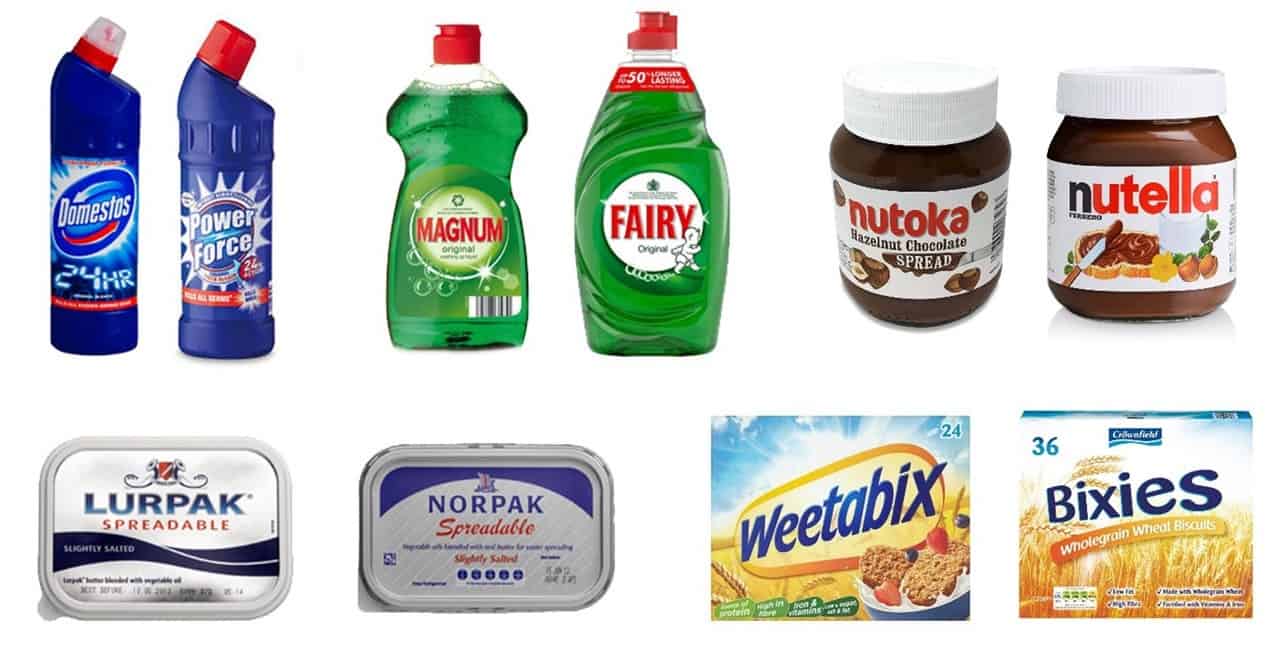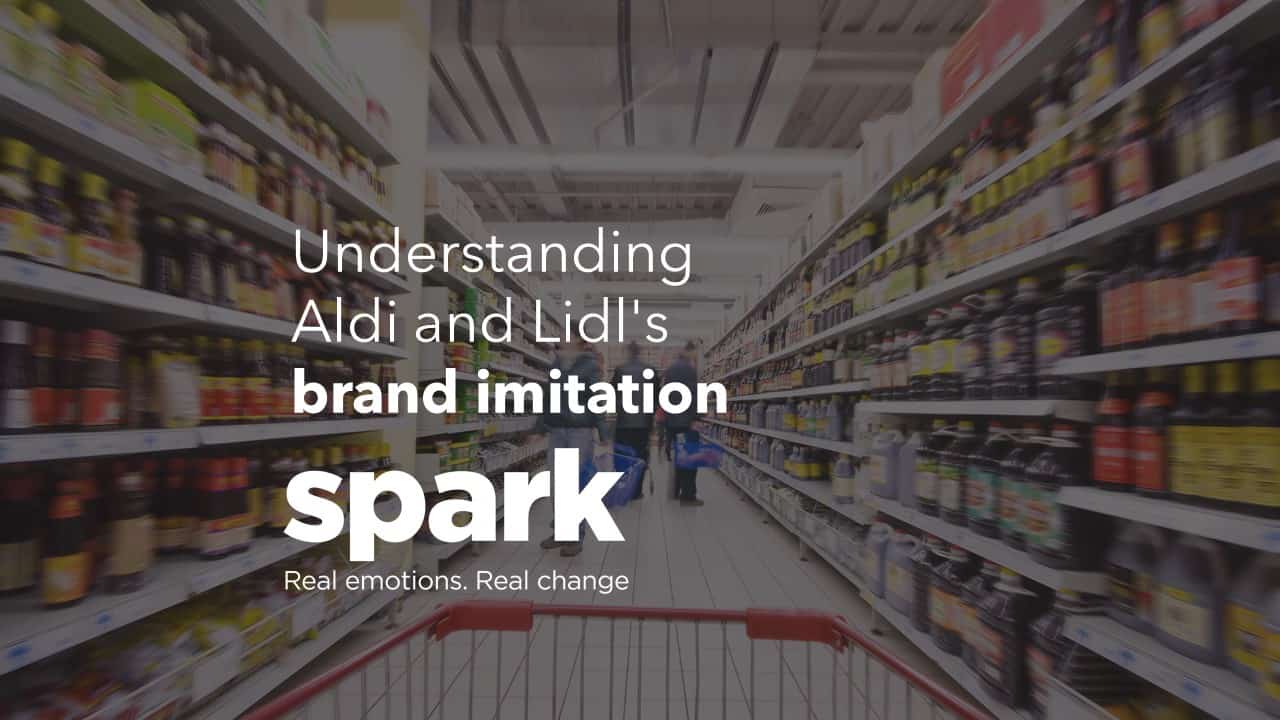Discounter supermarkets such as the likes of Aldi and Lidl have taken off both in the UK and around the globe over the last few years, and their success is only set to grow further.
Aldi UK profits are up almost 32 per cent year-on-year, it has just opened its 500th store in Britain and has promised another 50 are on their way. Their success has spanned from their unique proposition within the grocery sector where the focus is placed on fewer lines and own-label offerings, keeping costs low, and thus making it possible to offer such competitive prices.
Brand imitation has been a successful tactic
A technique these retailers often adopt to drive sales of their own label products is brand imitation, and it has been proven to be very successful.
The most recent example that evoked widespread conversation was Aldi’s Cuthbert the caterpillar cake, which bared undoubtable resemblance to M&S’s famous Colin the caterpillar cake, sparking controversy and accusations of ‘copycat’ branding. And yet, despite the allegations and the fact that Trademark law should be the ideal tool for preventing ‘copycat’ products, media, alongside Aldi’s PR department brushed off the situation, adding comical value and a certain lightheartedness to the quarrel.

How do they get away with it?
So, why do retailers like Aldi and Lidl imitate brands, and furthermore how do they get away with it? These questions have simple enough answers. Some of the world’s leading, most popular bands have spent a great deal of money and many years perfecting their branding and building their reputation.
Those who have been most successful have established clear ‘distinctive assets’ (find out how we can help you identify your brands distinctive assets) that prompt shoppers to instantly recognise the brand through effects such as colour, symbols, or taglines.
When Aldi and Lidl adopt these distinctive assets for their own label lines making only minor adaptations, they are sidestepping the hard work and cost of building a brand’s reputation, and instead are reaping the benefits of one already established and recognised by shoppers.
By then sticking a lower price tag on the product, they encourage shoppers to trial, as shoppers will automatically associate the own-label brand with the performance and reputation of its well-established counterpart, making the switch to own label appear less of a jump for shoppers, and a risk worth taking for the more attractive price point.
Aldi and Lidl usually go unchallenged
Despite clear allusions to brands and drawing on their distinctive assets, Aldi and Lidl rarely receive challenges like that of the Cuthbert vs Colin case, and it’s mostly become accepted that this is just what these retailers do.
Intellectual property partner Jeremy Hertzog, of law firm Mishcon de Reya, says: ‘Brands are cautious about taking legal action in situations like this. The brand would need to prove that the copycat product is deliberately out to confuse the buyer into believing that the similar-looking product is actually connected economically to the original in some way.’
Since there is an awareness amongst consumers around the approach and offerings of discounter supermarkets such as Aldi, this is rarely incited. Similarly, as discussed by CITMA (Chartered Institute of Trade Mark Attorneys), supermarkets often get around their mimicry by choosing a different brand or product name, while still hinting at the branded version of the product with certain packaging ‘cues.’ This underpins their marketing strategy of taking inspiration from leading brands while still (mostly) falling on the right side of the law.

Who really benefits from this?
At the end of the day, the shopper is the primary focus for any retailer, and it can be argued that consumers are benefitting from the choice that own-brand ranges are providing and are being given more autonomy over the amount they are willing to pay for staple items.
Indications towards well-known brands through packaging, colour, and other distinctive assets can be seen as merely a helpful tool to aid shoppers’ processing fluency and make for an overall easy shopping experience
How we can help
Through our Shopper Behaviour area of expertise, we are able to help you truly understand your shoppers’ behaviour and emotions in store. Working in tandem with our Brand, Pack and Media area of expertise, we can help you identify your brand’s distinctive assets, helping to attract more buyers to your category, aisle, and ultimately, brand, to help you sell more products.
Sources:
The Chartered institute of Trade Marketing Attorneys (CITMA)
Get in touch to find out how we can help

Written by Holly Adams, Research Manager at Spark Emotions.
If you have any questions, feel free to reach out to Holly via email holly.adams@sparkemotions.com or connect with her on LinkedIn








5 thoughts on “Understanding Aldi and Lidl’s brand imitation ”
Comments are closed.